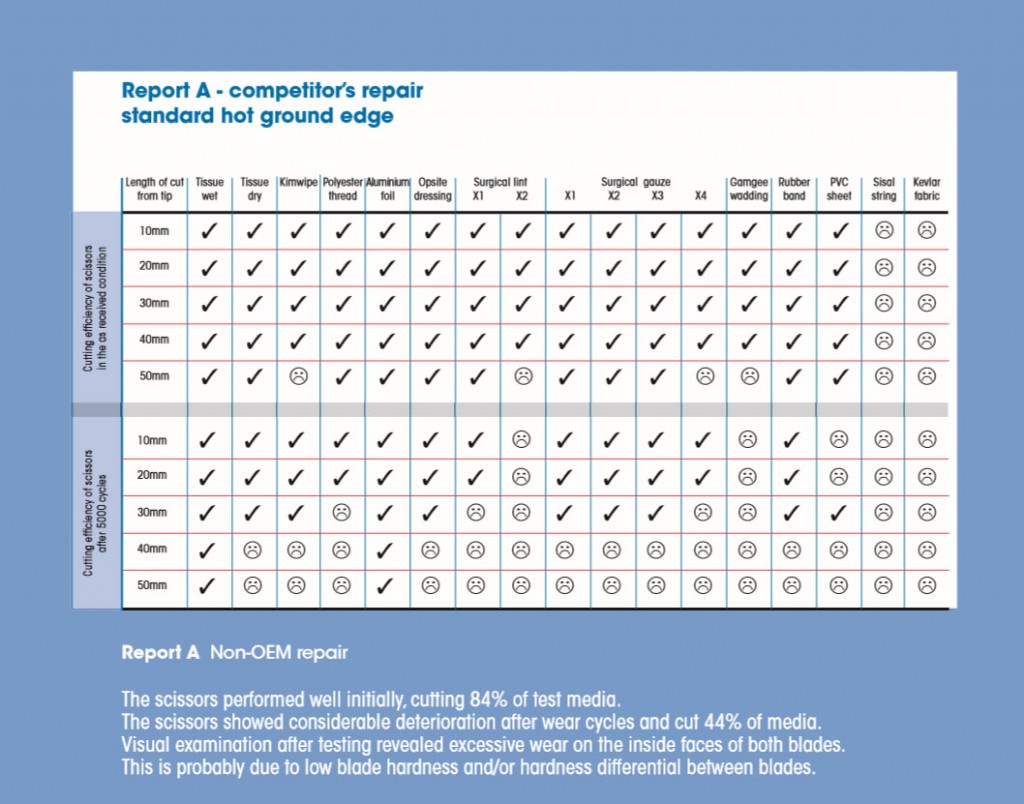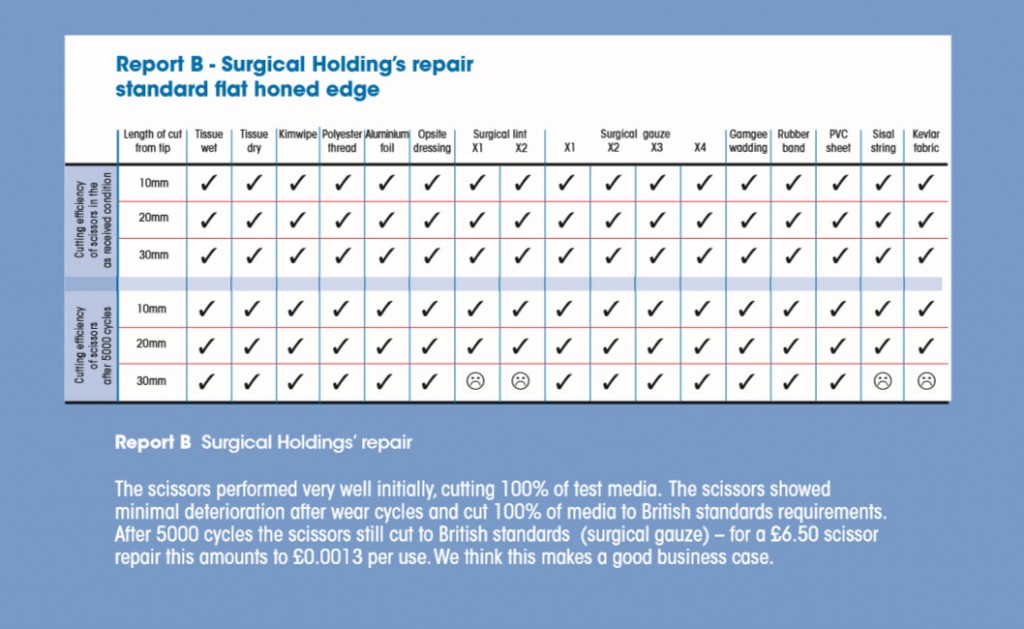Effective Surgical Instrument Repair
The NHS spends over £20 billion every year on goods and services which typically accounts for around 30 per cent of the operating costs of each hospital. The benefits of long term product value versus short term price benefits were discussed in last years NHS procurement review, with procurement departments being recommended to investigate this wherever possible.
“We need to radically improve our procurement capability, raising and maintaining it to world-class standards. Doing so will reduce our costs, improve patient outcomes and, at the same time, make the NHS a better place in which to do business.” – Dr Daniel Poulter MP.
At Surgical Holdings all surgical instruments are repaired to BS 5194, Original Equipment Manufacturer (OEM) specification in accordance with the recommendations laid out in MHRA ‘Managing Medical Devices’. This ensures longevity of repair and protection of materials and hardness which can be detrimentally affected by a non-OEM repair.
To demonstrate the benefits of sharpening using OEM techniques, Surgical Holdings have carried out some independent tests on their scissor repairs versus a non OEM repair (results verified by CATRA).
The blades of each pair of scissors were marked at 10mm intervals along the cutting edge. The scissors were then subjected to 5000 opening and closing cycles on a pneumatically controlled jig and the cutting performance again recorded.
Click to enlarge
The report demonstrates that unless scissors are sharpened in accordance with OEM manufacturing techniques, the hardness of the blades is likely to be reduced and the longevity of use will fall dramatically. In the case of non-OEM repair techniques, once the hardness and temper of the edge has been compromised, the lifetime of the scissor will be reduced further each time it is repaired, until it must be replaced.
With Surgical Holdings instrument repair service, your damaged instruments will be returned fully refurbished “as new”. This may include regrinding, honing, resetting, welding, polishing, and nitric acid passivation. Replacing instruments is avoided unless necessary. Broken instruments can be remanufactured if no longer available, and some general instruments are replaced for the cost of the repair if the quality of the original doesn’t meet our stringent standards.
Click here to find out more about our surgical instrument repair service.









